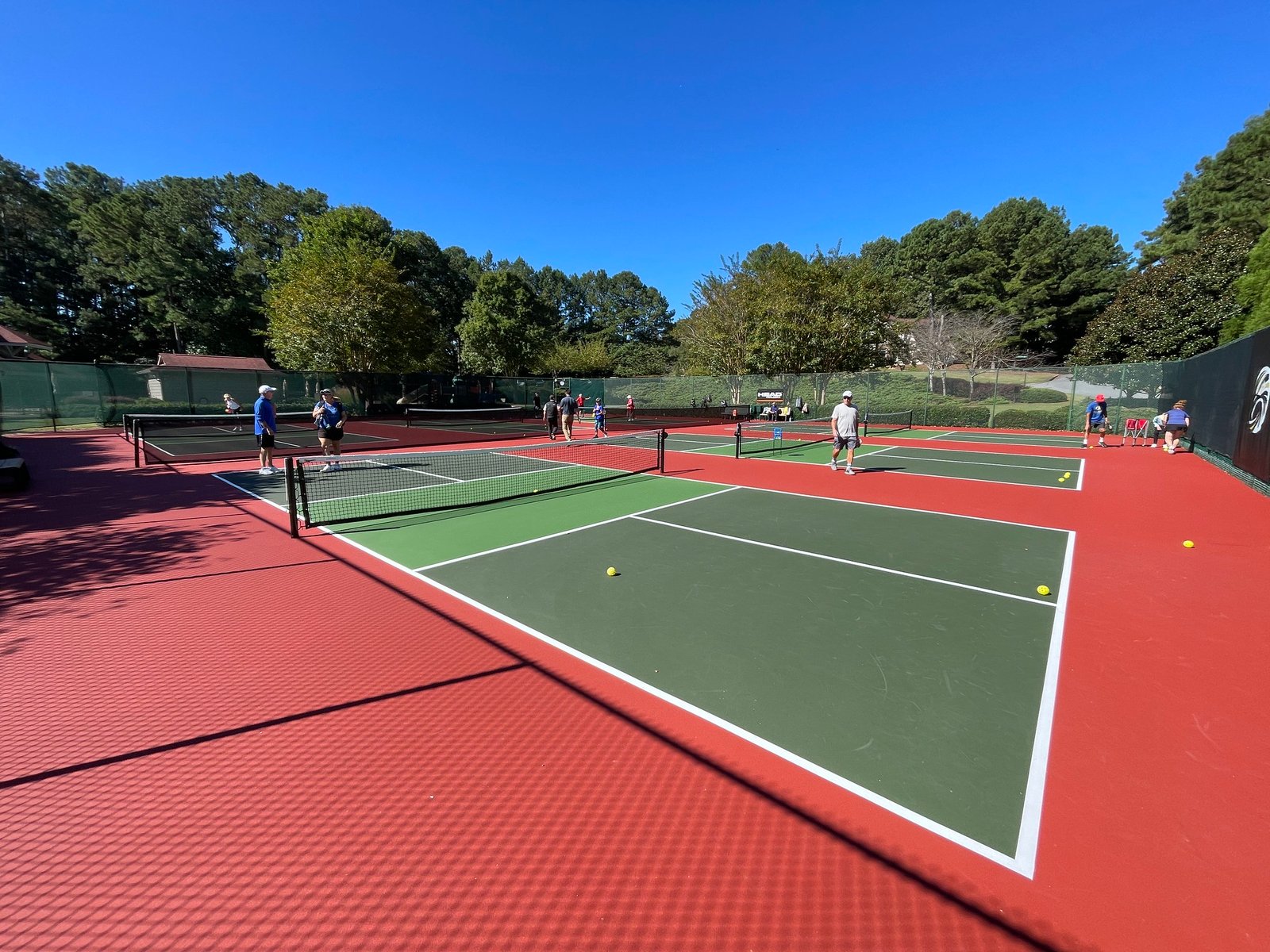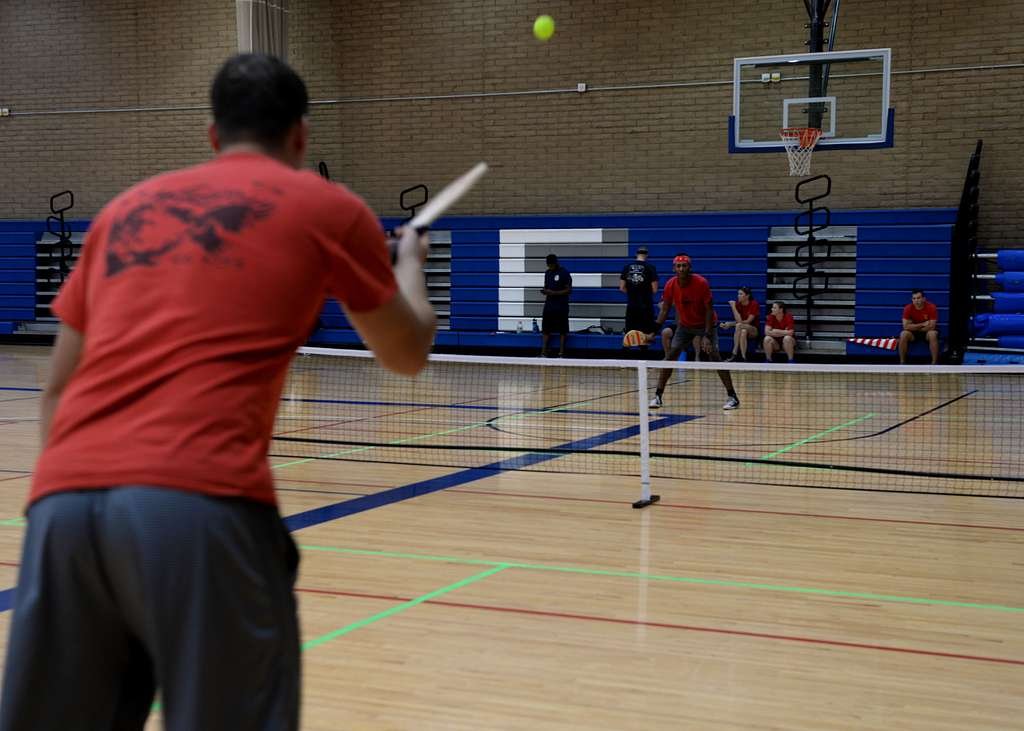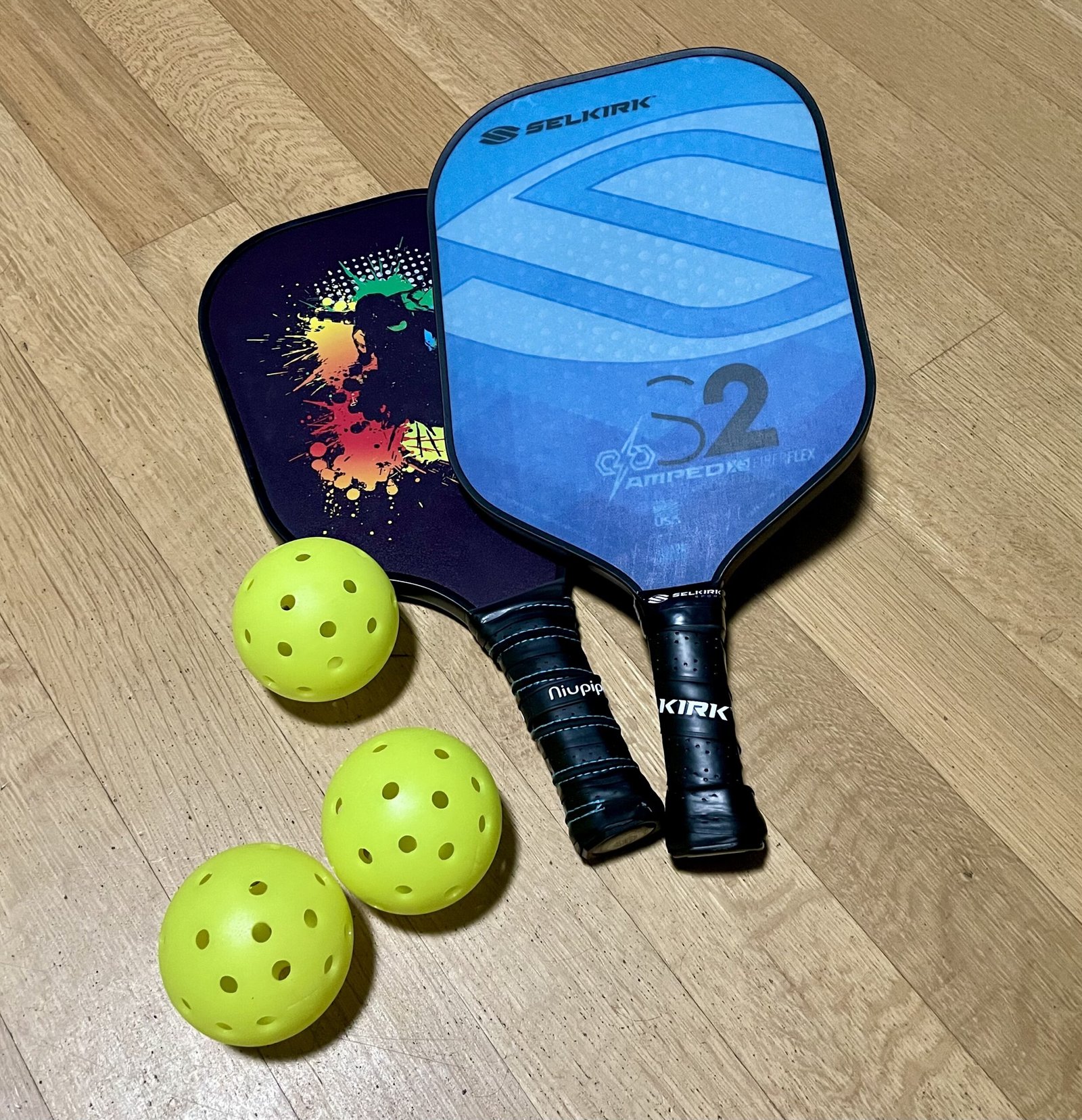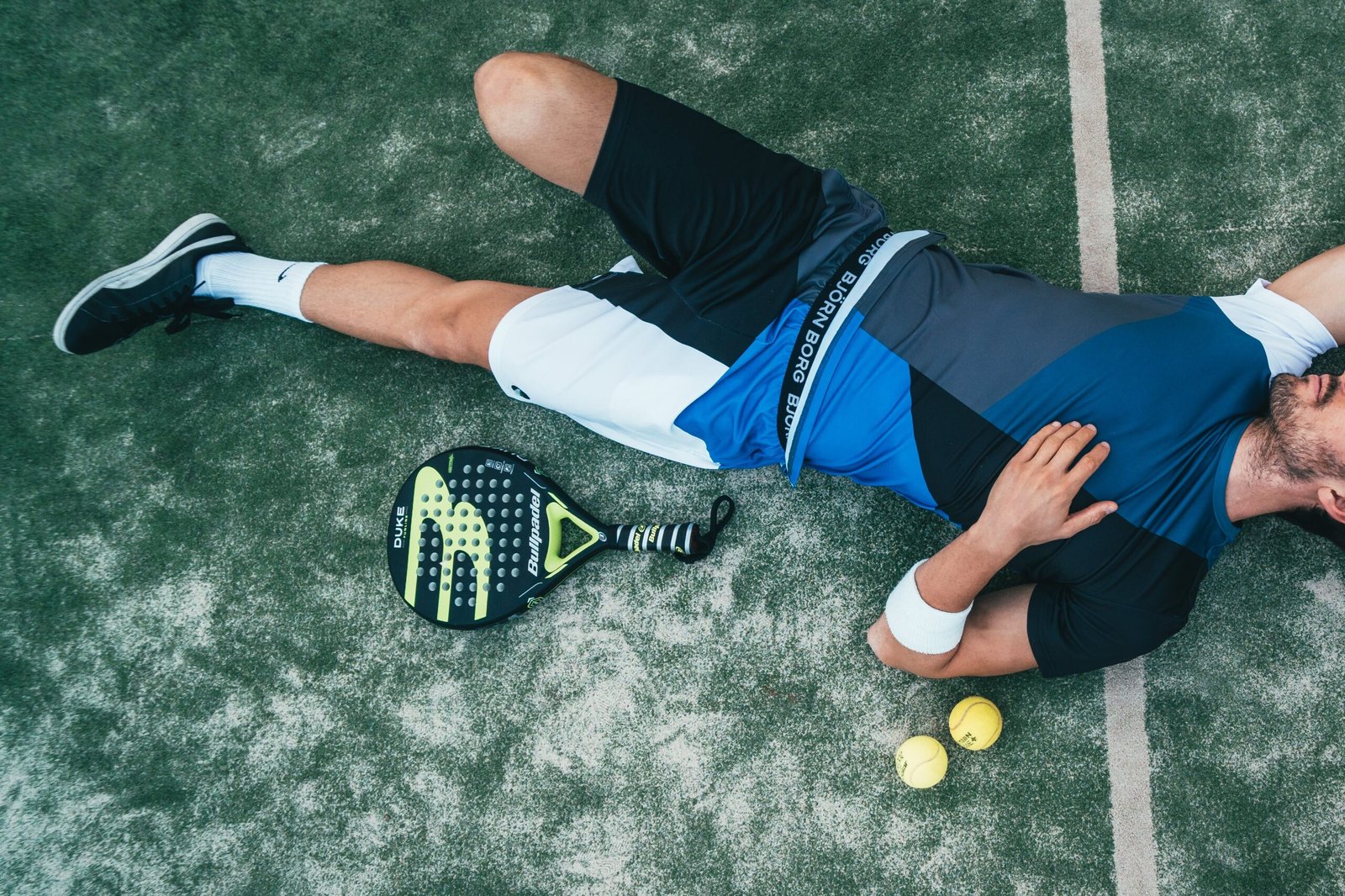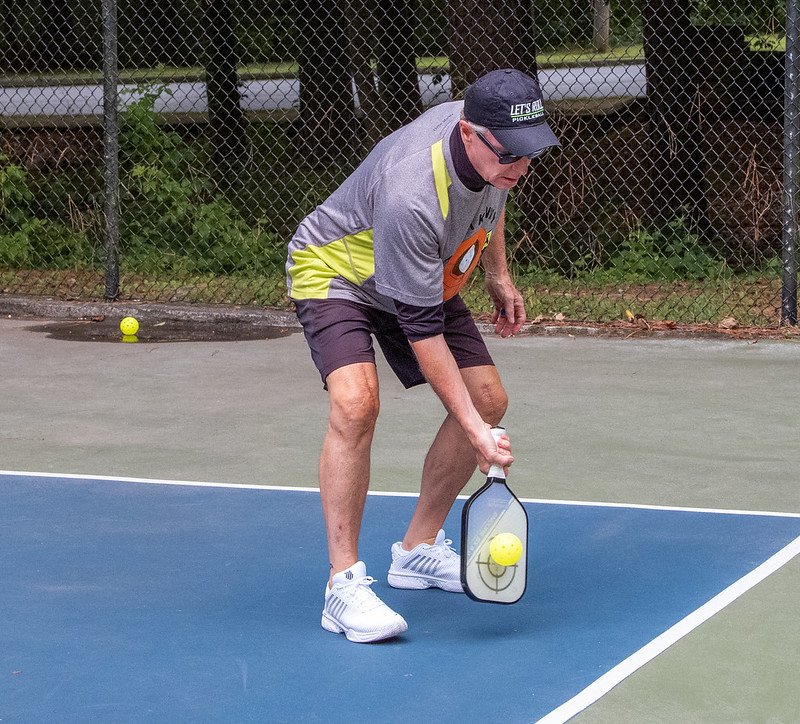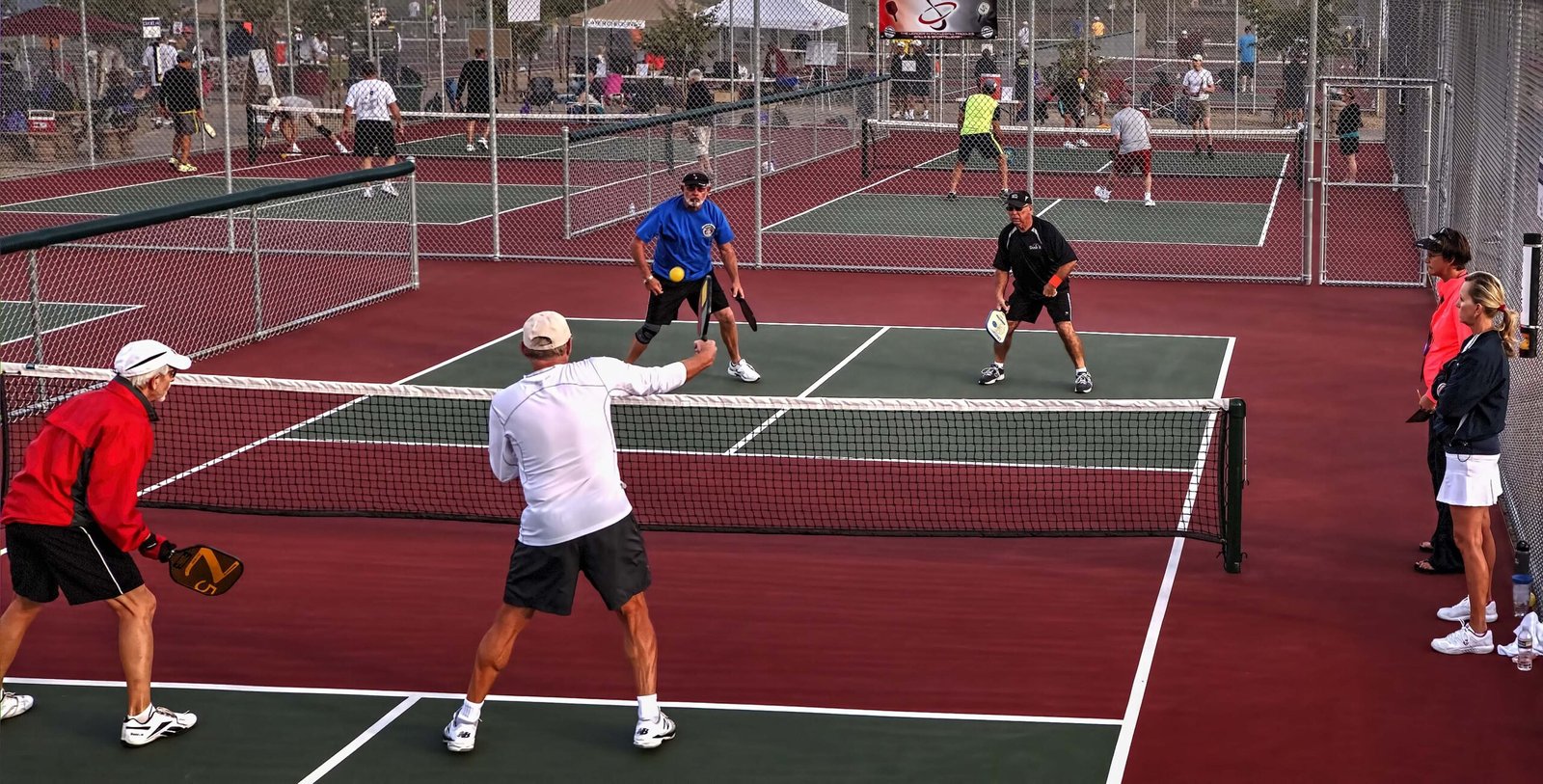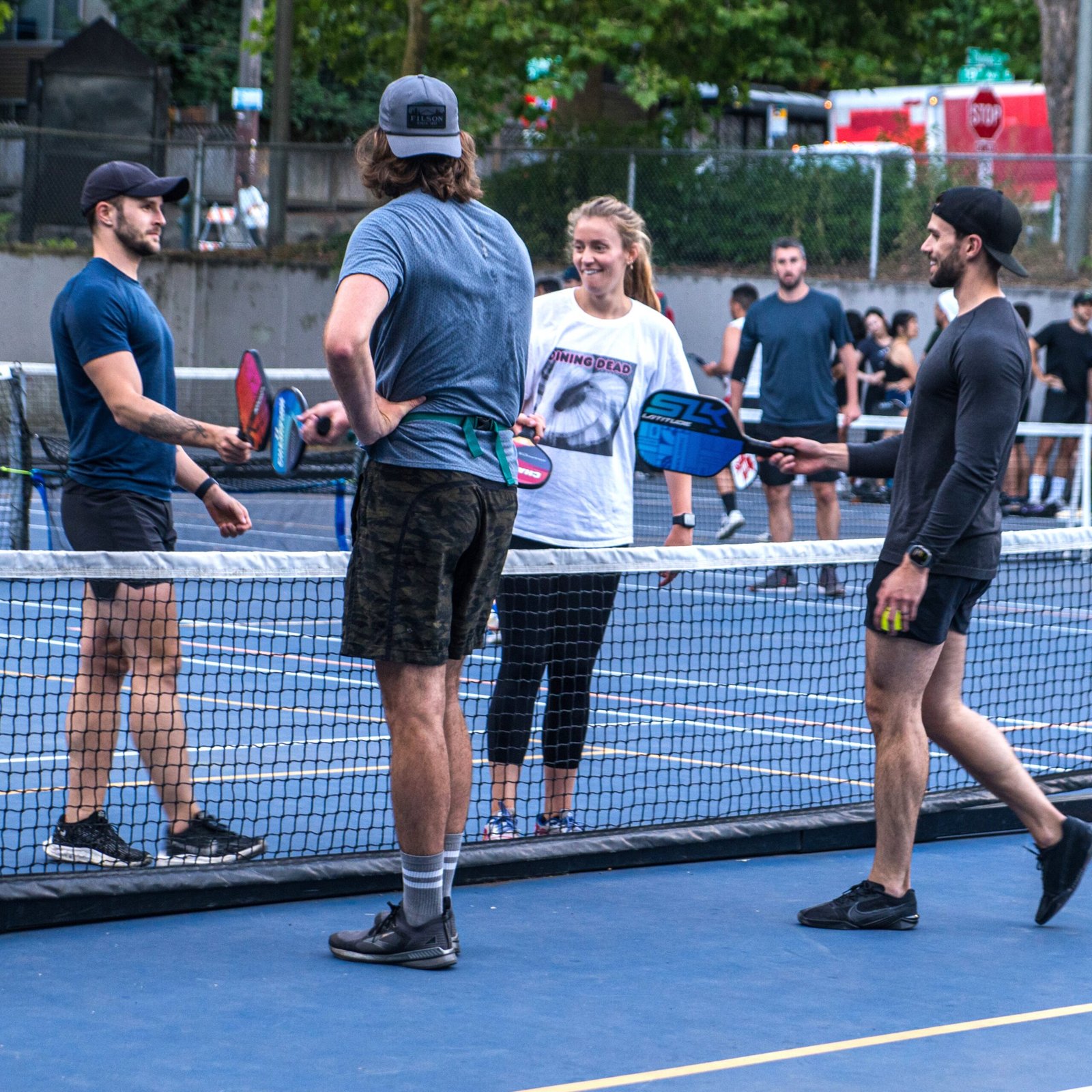In the realm of racquet sports, where athleticism, camaraderie, and skill come together, pickleball stands out as an increasingly popular choice. Whether you’re a seasoned athlete or just looking for a fun way to stay active, understanding the nuances of the game of pickleball and how it compares to its more established counterpart, tennis, can be crucial in deciding which sport best suits your interests and needs.
The pickleball court is at the heart of this comparison, a distinctive feature that sets this sport apart. While both pickleball and tennis share the fundamental concept of hitting a ball over a net, the dimensions of the playing surface differ significantly. A pickleball court is a smaller, more compact arena, measuring roughly one-fourth of the size of a standard tennis court. This difference alone profoundly impacts the dynamics of the game of pickleball, making it a unique and engaging experience.
The game of pickleball, which has been rapidly gaining popularity in recent years, is played with a perforated plastic ball and solid paddles. Players, typically in pairs, engage in fast-paced rallies, attempting to score points by landing the ball within the bounds of their opponent’s court. With its simplified rules and easy-to-learn mechanics, pickleball offers an attractive entry point for beginners and an enjoyable experience for players of all ages and skill levels.
In this exploration, we’ll delve into pickleball, examining its characteristics, benefits, and what sets it apart from tennis. While both sports have their merits, understanding the nuances of each can help you make an informed choice. Whether you’re seeking a new social activity, a low-impact form of exercise, or a sport that offers fast-paced excitement, the game of pickleball is the right fit. So, let’s take a closer look at this dynamic sport and discover why it’s gaining traction as an excellent alternative to the more traditional game of tennis.
Table of Contents
Why do people like pickleball over tennis?
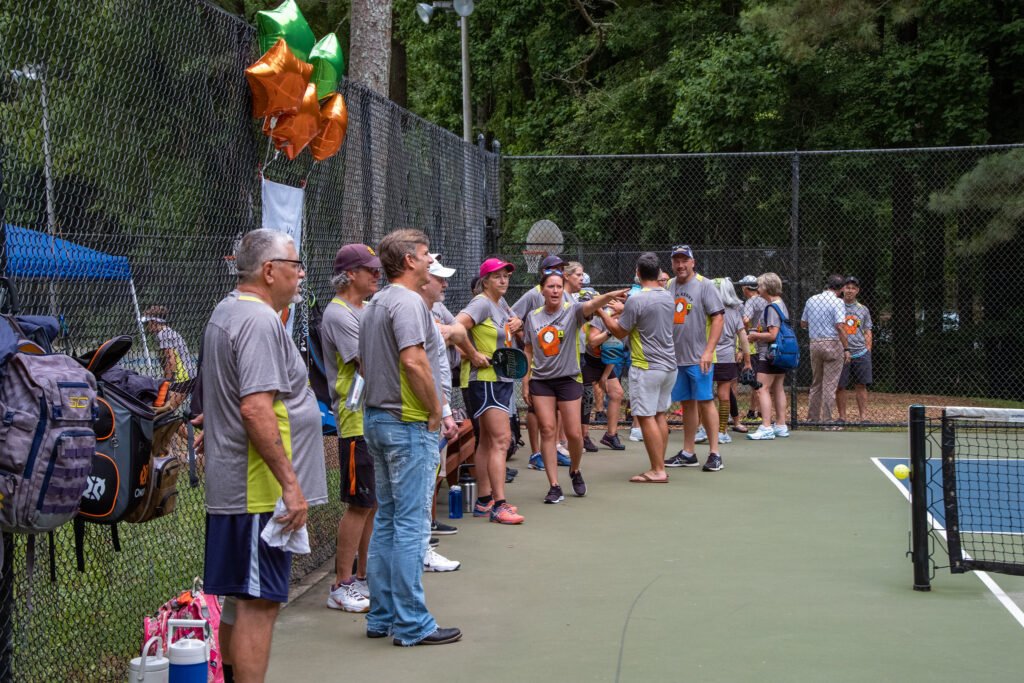
People often prefer pickleball over tennis for several compelling reasons. One key factor is accessibility. Pickleball’s smaller court size and slower ball make it easier for beginners to pick up quickly, allowing them to enjoy rallies and engage in the game with less initial frustration. This accessibility extends to people of varying fitness levels and ages, making pickleball a sport that’s inclusive and welcoming.
The social aspect is another draw. Pickleball is predominantly played in doubles, fostering a sense of camaraderie and community. It provides an opportunity to connect with others, make friends, and enjoy the game in a more social setting. This aspect of the sport is especially appealing to those looking for a fun and interactive way to stay active.
Furthermore, the fast-paced nature of pickleball, with its shorter rallies and quicker gameplay, can be exhilarating. Some players find this aspect more engaging and enjoyable than the longer rallies often seen in tennis. The compact court size also means less running and physical exertion, making it an attractive choice for individuals who prefer a lower-impact sport.
People gravitate towards pickleball due to its accessibility, social appeal, and the fast-paced, engaging gameplay it offers. While tennis has its own set of merits, pickleball’s unique combination of attributes makes it a popular choice for those seeking a fun and active recreational sport.

Why do people want to play pickleball?
People are drawn to play pickleball for a variety of reasons, and these motivations have contributed to the sport’s rapid rise in popularity:
Accessibility
One of the most significant attractions of pickleball is its accessibility. The smaller court size and slower ball make it easier for beginners and people of all ages and fitness levels to pick up the game. Whether you’re a seasoned athlete or just looking for a casual activity, pickleball welcomes all skill levels.
Social Interaction
Pickleball is often played in doubles, creating a social and community-oriented environment. It’s an excellent way to meet new people, bond with friends and family, and build connections within a supportive and friendly community of players.
Physical Activity
Staying active is essential for a healthy lifestyle, and pickleball provides a fun and engaging way to do just that. The game involves a combination of cardio, agility, and coordination, offering a full-body workout while being less physically demanding than some other sports.
Quick Learning Curve
Pickleball’s simplified rules and easy-to-master techniques make it an attractive choice for newcomers. Players can quickly get the hang of the game and experience the thrill of rallies and scoring points.
Fast-Paced Action
The smaller court and faster rallies in pickleball create an exciting and fast-paced gameplay experience. Many players enjoy the dynamic nature of the sport, which keeps them engaged and entertained.
Low-Impact Exercise
Pickleball is gentler on the joints compared to high-impact sports like tennis or basketball. This makes it an ideal choice for individuals looking for a low-impact exercise option that still offers the benefits of physical activity.
Competitive Challenge in Pickleball
While it’s accessible to beginners, pickleball also caters to competitive players seeking a challenge. The sport allows for skill development and strategy refinement, keeping players engaged over time.
People want to play pickleball because it offers a welcoming and inclusive environment, a balance of physical activity and social interaction, and a fun, easy-to-learn game suitable for players of all backgrounds and abilities. Its versatility and positive community make it a compelling choice for those seeking both recreation and fitness.
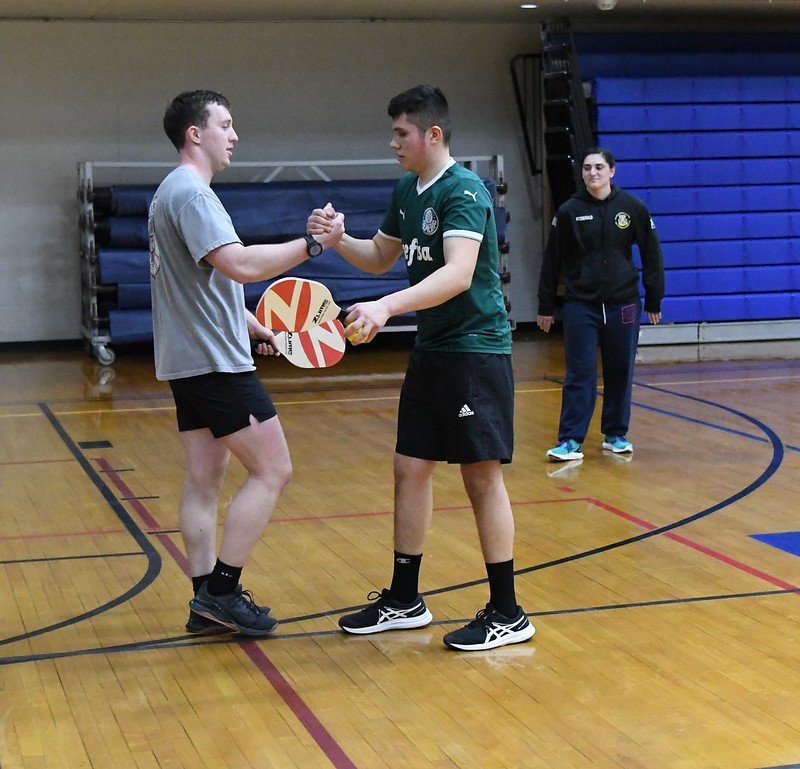
Which Racquet Sport Is Right for You?
Pickleball is a paddle sport that combines elements of tennis, badminton, and table tennis. It is played with a perforated plastic ball (similar to a wiffle ball) and a solid paddle on a small court that is roughly one-fourth the size of a tennis court. Pickleball can be played both indoors and outdoors and is suitable for players of all ages and skill levels.
Here are some reasons why people might choose pickleball over tennis:
Easier to Learn
Pickleball’s reputation for being beginner-friendly stems from several key factors that collectively make it easier to pick up than tennis.
First and foremost, the smaller court size significantly reduces the amount of ground that players need to cover. This scaled-down playing area translates into shorter distances to run, making it less physically demanding and more manageable for newcomers, particularly those who may not be accustomed to the wide-ranging movements required in tennis.
Additionally, the use of a slower ball in pickleball allows players more time to react and get into position. Tennis balls travel at much higher speeds, making them harder to control for beginners. In contrast, the slower-moving pickleball provides a gentler learning curve, enabling players to develop their hand-eye coordination and shot-making skills more comfortably.
Lastly, the simplified rules of pickleball, including the underhand serve and the “no-volley” zone (often referred to as the “kitchen”), reduce the complexity of the game for beginners. This straightforward rule set promotes quicker understanding and quicker engagement in the sport.
Collectively, these factors make pickleball an excellent choice for newcomers, providing a welcoming and enjoyable introduction to the world of racquet sports while fostering skill development and a sense of achievement.
Lower Physical Impact
Pickleball’s accessibility and appeal to a diverse range of individuals can be attributed to the sport’s unique combination of a smaller court size and a slower ball. These characteristics significantly reduce the amount of running and strenuous movement required compared to tennis.
The smaller court dimensions mean that players don’t have to cover as much ground during a pickleball match, making it less physically demanding, especially for those with limited mobility or fitness levels. This reduced court size also leads to shorter distances between players, facilitating quicker reactions and making the game more accessible to older individuals or those who may have difficulty navigating a full-sized tennis court.
Additionally, the slower ball used in pickleball allows players more time to react and position themselves, reducing the need for lightning-fast sprints or intense, long-distance chases commonly seen in tennis. This gentler pace makes pickleball an attractive option for people of varying ages and fitness levels, enabling them to engage in a fun, low-impact sport that offers the benefits of physical activity without excessive physical strain.
Social Aspect
Pickleball’s social aspect is a significant draw for many enthusiasts. Unlike tennis, where singles play is more common, pickleball is predominantly played in doubles. This unique format naturally fosters a sense of community and camaraderie on the court.
Playing in pairs encourages interaction and communication among players, whether they’re competing as a team or against each other. The close proximity of the players during rallies facilitates conversations, laughter, and quick exchanges, creating a vibrant and friendly atmosphere on the pickleball court.
For many, the social dimension of pickleball extends beyond the game itself. It’s common for players to socialize before and after matches, forming lasting friendships and connections. Pickleball gatherings, events, and tournaments often serve as opportunities for players to come together, share experiences, and celebrate their shared passion for the sport.
In essence, pickleball offers not just physical exercise but also a sense of community and social interaction that can enrich one’s overall well-being. It’s a sport where the bonds formed on the court can extend beyond the game, making it a genuinely enjoyable and social recreational activity.
Faster Gameplay
The smaller court size in pickleball significantly impacts the pace and excitement of the game. Unlike tennis, where players may engage in long, drawn-out rallies that test their endurance and patience, pickleball’s compact court encourages quicker, more dynamic exchanges. This accelerated pace can be a major draw for many players.
The reduced court dimensions mean that players have less ground to cover, resulting in shorter distances to run and quicker reactions required. As a result, rallies in pickleball tend to be fast-paced, filled with swift volleys, and demanding of split-second decision-making. The combination of a smaller court and the sport’s rules, which favor shorter serves and return volleys, creates an environment where rallies can end rapidly.
For those who relish the adrenaline of rapid-fire exchanges and the thrill of quick thinking on the court, pickleball’s faster pace can be highly appealing. It offers a unique blend of skill, strategy, and agility that makes each point a potential game-changer, keeping players engaged and entertained throughout their matches. This makes pickleball an exciting alternative to tennis for those seeking a more dynamic racquet sport experience.
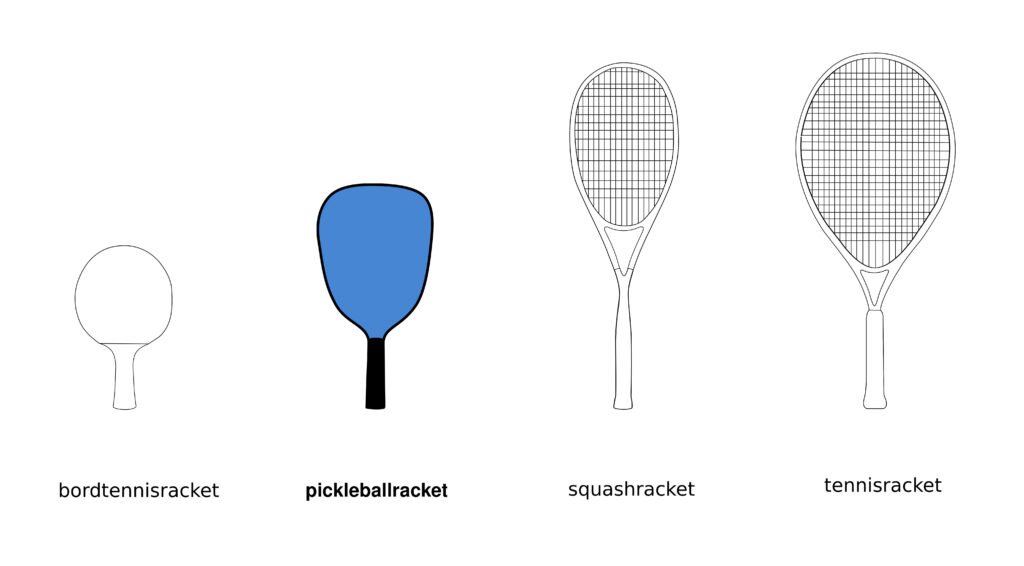
Equipment
The smaller size and design of pickleball paddles compared to tennis rackets offer several advantages, particularly for beginners and players with limited strength or mobility.
Firstly, the compact size of pickleball paddles makes them easier to handle, allowing players to quickly adapt to the mechanics of the game. Tennis rackets, with their larger heads and longer handles, can be more challenging for beginners to control, leading to frustration and a steeper learning curve.
Additionally, pickleball paddles are generally lighter than tennis rackets. This reduced weight makes it easier for players with limited strength or physical endurance to sustain longer rallies without fatigue. It’s especially beneficial for individuals who might struggle with the heft of a tennis racket.
Moreover, the grip size of pickleball paddles is typically more standardized and comfortable, providing better ergonomics for players with mobility limitations or hand issues.
Overall, the smaller, lighter, and more user-friendly design of pickleball paddles enhances the accessibility of the sport, making it a popular choice for people of diverse skill levels and physical abilities. It reduces barriers to entry, allowing a broader range of individuals to enjoy the game.
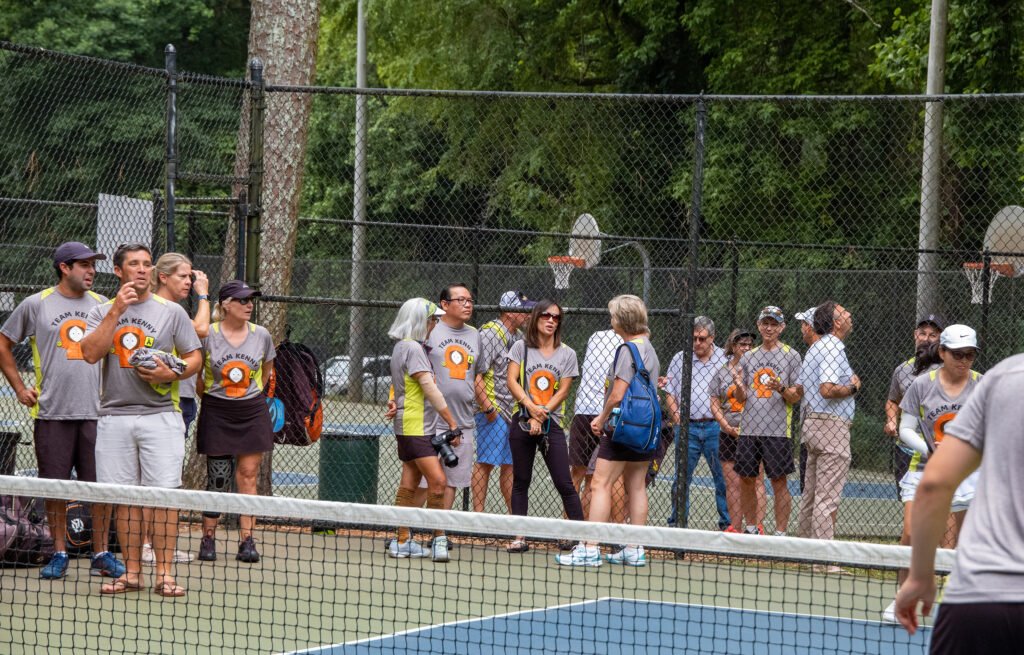
Community
Pickleball’s thriving and inclusive community of players is a significant factor contributing to its popularity. Unlike some sports that may have a more exclusive or intimidating atmosphere, pickleball embraces newcomers with open arms. The community is known for its friendliness and willingness to help beginners learn the ropes, fostering a welcoming environment that encourages participation.
Furthermore, finding local pickleball courts and groups is often more accessible than locating tennis facilities. Due to the smaller court size required for pickleball, many recreational areas, schools, and community centers have been able to repurpose existing spaces into pickleball courts. This availability makes it easier for interested individuals to find a nearby place to play.
Additionally, social media and online platforms have played a role in connecting pickleball enthusiasts and facilitating the formation of local groups and events. These factors collectively make pickleball an attractive choice for those seeking both a sport and a supportive community to be a part of.
The choice between pickleball and tennis hinges on individual preferences, fitness levels, and the specific aspects one values in a sport. Tennis, with its full-size court and storied history, appeals to those seeking a more traditional and demanding athletic pursuit. It requires significant running, agility, and a high level of skill to master its techniques. Moreover, tennis boasts a thriving professional circuit with world-class tournaments, making it an attractive option for competitive athletes.
On the other hand, pickleball’s charm lies in its accessibility and sociable atmosphere. Its smaller court size and slower pace make it less physically demanding, making it ideal for those with mobility issues or who prefer a lower-impact activity. The community aspect of pickleball often played in doubles, fosters connections and friendships, which may be particularly appealing to individuals looking for a social outlet.
Ultimately, the decision boils down to personal preferences and goals. Some relish the challenge and tradition of tennis, while others embrace pickleball’s inclusive and engaging nature. Both sports offer a pathway to enjoyable exercise and recreation, ensuring that there’s something for everyone, regardless of their athletic aspirations or skill levels.

